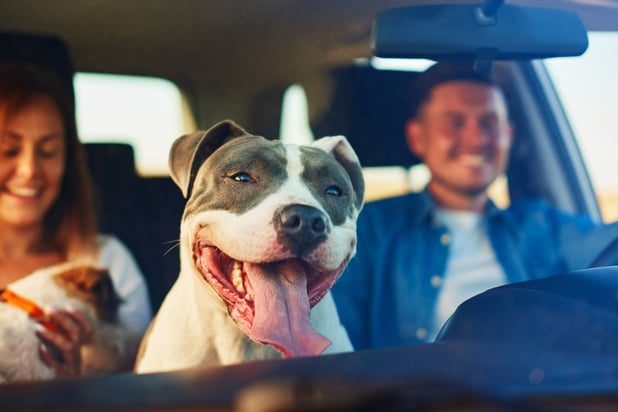

Dogs may be man’s best friend, but they might not be his safest driving companion.
A new survey on distracted driving behavior shows that 91% of licensed drivers who drove with a furry pal over the past 12 months interacted with them while on the road.
Two in five (40%) drivers confessed to reckless driving and just under one in 10 (9%) have gotten into a car accident as a direct result of having their pet in the vehicle.
The data from home, auto, and business insurer Selective Insurance reveals the extent of hazardous driving behaviors that dog owners engage in. Distracted behaviors include taking their hands off the wheel or their eyes off the road to interact with their dogs.
The study conducted by The Harris Poll also found, of dog-owning drivers:
Taking a dog out for a cruise for personal reasons might seem more commonplace. But Scott Smith (pictured below), vice president, director of safety management at Selective Insurance, said he was surprised by the number of respondents (61%) that took their pooches out while on a work-related drive, many doing so several times a month.

“We were surprised to learn how frequently K-9s accompany drivers while they are on the clock,” Smith. “Employers may need to consider additional distracted driving training and modifications to corporate policies and their fleet safety programs to address pets in vehicles during work hours.”
The survey, which polled more than 2,000 US adults, also showed a generational difference in this behavior. Gen Z (73%) and Millennials (78%) were more likely to take their dog on a drive for work-related reasons, versus Gen X (56%) and Boomers (33%).
Some of the distracted driving behaviors that respondents confessed to included experiencing a lack of awareness of other vehicles around them (16%), hard braking (13%), and swerving (11%).
“Creating a safe, distraction-free environment for employees who drive is good business and integral to maintaining safe roadways,” Smith said.
One in five households across the US adopted a cat or dog during the pandemic, so it’s no surprise that Americans’ fur babies are riding shotgun.
Most (70%) drivers surveyed said they drove while their pets were unrestrained in the vehicle. Perhaps ironically, 82% also agreed that an unrestrained dog in a moving vehicle can distract the driver.
Selective Insurance noted that though some states have animal restraint laws for vehicles to help keep drivers safe and focused, awareness remains low.
Only 24% of licensed drivers who drove with their dog in the past 12 months said they are very familiar with such laws in their state compared to 34% who said they didn't know these laws existed.
Drivers are in for a ‘ruff’ ride if they continue with risky behaviors, Selective Insurance warned.
“Our research shows that drivers consider it normal to pet, provide treats, photograph their pets while operating a vehicle,” Smith said. “Pairing those behaviors with operating a moving vehicle is a recipe for disaster.”
One way to limit distracted driving is by properly securing dogs in vehicles. Pet passengers should be restrained in the car's backseat or rear cargo area, Smith said.
“In the case of an accident or even stopping short, dogs can become dangerous projectiles. This poses a risk to your dog, the driver, other people in the car, other drivers, and even pedestrians,” he told Insurance Business.
Restraining pets reduces distractions caused by their movements around the car and prevents drivers from engaging with the animal, such as petting and treating.
He shared more tips for driving safely with pets:
“By understanding how habits evolve through distracted driving research, we can help educate and empower our customers to be advocates for the safety of everyone on the road, including our beloved pet passengers,” Smith said.
Have something to say about this story? Tell us in the comments below.
